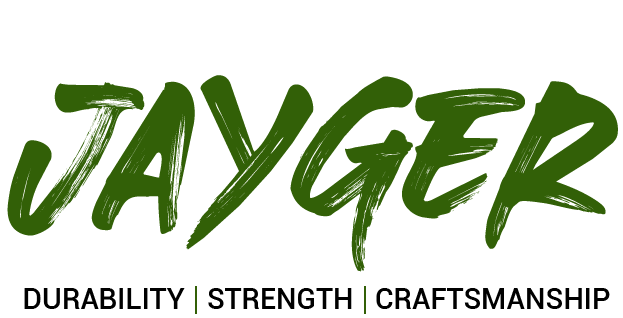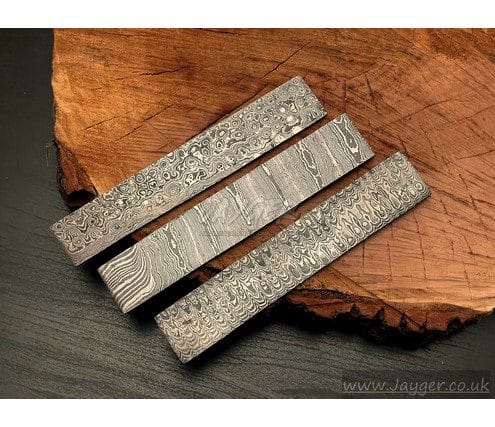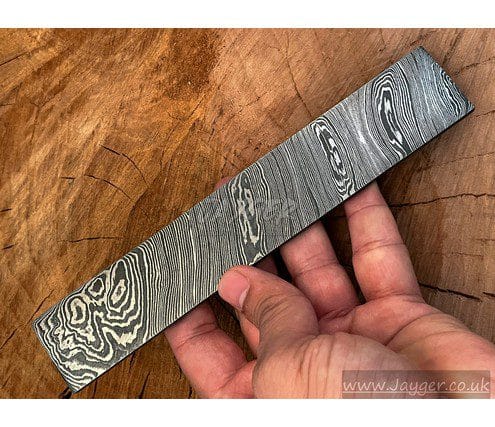The famous Damascus knife has been revered for generations for its beauty, strength and sharpness. Crafted from layers of steel folded and forged until a distinct pattern is created, these knives are sought after by professionals and hobbyists.
Damascus steel is a type of metal renowned for its durability and beauty, making it an ideal choice for knife-making.
This guide will explain the different types of Damascus steel available and provide tips on finding the correct pattern Damascus blanks, knife-making supplies and tools for your project.
What Steels are Best for Damascus?
With the resurgence of Damascus steel over the last few decades, more and more steel is being used for Damascus blades.
Different types of steel display exceptional hardness, strength, and corrosion resistance. Damascus steel chef knives are created by combining two or more different types of steel. These combinations usually include high- and low-carbon steels for strength plus stainless steels for extra corrosion resistance.
Some varieties may mix other metals for greater flexibility, sharper edge retention, and better overall toughness. So it’s essential to understand different steel compositions and their impact on a Damascus blade’s performance.
Popular types of steel for Damascus blades include 1095-15N20, L6-Bohler Uddeholm, 52100, RWL34, CTS-204p, CPM154 Steel, and CPM 3V Steel.
What are the Different Damascus Patterns?
The patterning makes Damascus steel so distinct, and a variety of different Damascus patterns are available. Generally, these patterns fall into two categories; random and geometric patterns.
Random patterns can be found in naturally-made Damascus steel. In contrast, geometric patterns are created by etching the blade with an acid-resistant material before the blade is etched in an acid bath.
Some popular patterns include Twist, Raindrop, Ladder, Ladder Crosscut and Feather. Each type of pattern Damascus steel is crafted differently to achieve its various effects, using multiple combinations of high-low carbon ratios and heat treatments.
For Example:
Twist:
Twist Damascus features a core of steel that’s tightly wound together with two or more steels.
Raindrop:
Raindrop consists of two steel sheets (with high- and low-carbon percentages) forged together in alternating layers.
Can Damascus Be Faked?
Unfortunately, it can be challenging to determine if Damascus steel is genuine or fake. One way to help differentiate between real and fake Damascus is by its pattern. High-quality Damascus steel will typically feature a more intricate and pronounced design. While low-quality or fake Damascus may have less definition in the patterns.
It’s also essential to make sure you’re buying authentic Damascus steel from reputable dealers that can provide proof of authenticity.
Is VG10 Damascus Steel Good?
VG10 Damascus steel is considered a good quality, popular amongst Japanese knife makers. This type of steel combines several properties: Cobalt, Molybdenum, Vanadium and Carbon. Resulting in a robust steel that can be hardened to 60-62 HRC (Rockwell hardness). Which makes it perfect for making durable knives. Plus, the unique grain pattern of VG10 Damascus steel makes it visually appealing and friendly enough to become a showpiece.
It is rigid and sturdy, has a beautiful grain pattern, and can be sharpened with minimal effort. But because it is harder to work with than other types of Damascus steel, professional craftsmanship is required when creating knives out of VG10 Damascus steel. These knives tend to hold an edge longer than Damascus knives if adequately cared for.
What is the Highest Layer Count of Damascus Steel?
The highest layer count of Damascus steel used in contemporary knives is 256 to 720 layers.
256 Layers:
This type of steel is popular amongst high-end knife making supplies. Because it offers maximum strength. While still allowing the blade to be relatively thin, resulting in a sharper and more durable edge. Additionally, the pattern created by the multiple layers can be aesthetically pleasing depending on the acid or etching used.
720 Layers:
This type of steel is challenging to create and can take hours to complete. But the result is a solid and durable blade that can hold its own against other blade steels. If you purchase Damascus steel blanks or knife supplies. Ensure they are made with at least 200 layers for durability and strength.
What is AUS 10 Damascus Steel?
AUS 10 Damascus steel is an ultra-modern variation of the traditional Damascus steel formula. AUS 10 Damascus steel is a challenging and durable material made from a stainless steel core with a patterned outer layer of softer steel.
It’s lauded for its toughness, corrosion resistance and attractive finish, making it suitable for use in swords and knives that need to stay sharp longer.
What is the Secret of Damascus Steel?
The secret behind Damascus steel’s strength and durability is pattern welding combining two or more metals with different compositions. This technique creates an intricate and often mysterious pattern within the steel artisans have admired since ancient Greece.
During the forging process, iron ore, carbon and other elements are heated and then subjected to hammering and folding to create incredible complexity and intricacy within each blade.
To this day, no one completely understands exactly how Damascus steel blades were crafted—which is why they remain a sought-after mystery.


